
Japanese Knotweed Identification in Northfleet
Get in touchWe are specialists in identifying Japanese Knotweed plants and can advise you on the best ways to deal with knotweed in Northfleet if necessary.
Contact our team today if you have knotweed in your garden or around your property and require Japanese knotweed identification in Northfleet DA11 9.
We have worked in the industry for over 20 years, and our professional team has expert knowledge of knotweed plants.
At Japanese Knotweed Specialist, our team of experts will help you recognise Japanese Knotweed and prevent future plant growth.
Call the number above or fill out our contact form to learn more about our identification service.
Once we receive your enquiry, we will respond as soon as possible to identify the knotweed plant and discuss what needs to be done to remove it and prevent it from growing back.
Keep reading for an extensive guide to identifying the dreaded knotweed and management tips to control it.
How to Identify Japanese Knotweed
If you're interested to know how to identify Japanese Knotweed it is a good idea to look out for the following things:
Green, heart-shaped leaves.
Japanese Knotweed grows to 2-3m high.
Bamboo like stems with dark red or purple speckles. Mature Japanese Knotweed canes are hollow, resemble bamboo stems and can be snapped easily.
Zig-zag leaf pattern due to the leaves growing from the stems.
Cream, white cluster of flowers.
When identifying Japanese knotweed, there are several things to look out for. Our professionals know just what to look for during the identification process.
If you're looking for experts closest to you or within surrounding areas, our experts can help - since we work nationwide, we'll have an expert nearby who can come and investigate your property for unwanted weed.
We'll then get our local specialists to remove or treat the plant to ensure you don't undergo any further problems.
Japanese Knotweed Characteristics
We have listed the main Japanese Knotweed characteristics to look out for:
Flowers – Japanese Knotweed flowers tend to be cream-white in colour and form clusters. The flowers will usually bloom very late summer (August/September).
Height – Typically grows to 2m but can grow up to 3m in height.
Leaves – Japanese Knotweed leaves are usually light green with red or purple flecks. They are known to have a heart or shovel-shaped leaf with a pointed tip and shoot out from nodes in a zig-zag pattern. New Japanese Knotweed leaves are rolled up with dark red veins whereas mature leaves can grow up to 20cm.
Stem – Japanese Knotweed stems grow in a zig-zag pattern and are green with purple and red speckles. The hollow stems grow to 2-3 metres in height.
Roots – Roots to this plant are also known as a Japanese Knotweed rhizome. The outside is dark brown, inside is orange/yellow. It can grow 3m deep and between 2m to 7m horizontally.
How is Japanese Knotweed Identified?
Japanese Knotweed is usually identified by its creamy white flowers.
The Japanese knotweed flowers tend to bloom between August and September. Japanese Knotweed flowers appear by late summer or early Autumn and will typically be lengthy clusters and be either creamy-white or pale pink flowers.
Japanese Knotweed flowers are also known as spikes. The length of the knotweed flowers is usually 10cm.
This knotweed has green, heart-shaped leaves or spade-shaped leaves that can grow up to 200mm long. Japanese Knotweed stems of the plant are green with red spots further down; the Japanese Knotweed plants can grow up to 3m tall.
Japanese Knotweed roots are also known as rhizomes. The Japanese Knotweed rhizome will have an orange tinge when cut; this is another way to identify knotweed.
Knotweed does not tend to produce viable seeds, although this is possible.
Japanese knotweed is a plant many people identify incorrectly. However, a few things help the unwanted weed stand out from other plants.
What Does Japanese Knotweed Look Like?
Japanese Knotweed will look different depending on the time of year.
Young knotweed shoots tend to be brown with speckles of dark green, whereas a more mature plant will tend to have pale green leaves with purple or pink veins.
In Summer, you may notice the Japanese Knotweed flowers. These are small creamy white flowers white and are clusters growing on the plant.
Japanese Knotweed in Spring may be recognised by the new shoots. New Japanese Knotweed generally looks like asparagus spears - red or dark green in colour.
In Autumn, the Japanese Knotweed leaves turn yellow, and some wilt. Then in Winter, the Japanese Knotweed leaves die and drop off the knot weed leaving dark brown, brittle canes.
If you're interested in discovering more about Japanese Knotweed's appearance, please get in touch with our professionals now.
We can discuss various things that make the knot weed stand out compared to other plants.
Simply fill in our enquiry box now, and we will provide you with more information on what Asian knot weed looks like.
Identifying A Japanese Knotweed Weed Infestation in Northfleet
As experts in identifying a Japanese Knotweed infestation in Northfleet DA11 9 we know exactly what to search for.
Our specialists can offer professional identification services to ensure you get the best identification.
Being experts within the industry, you can be confident that our identifications are correct.
If you've any questions about recognising Japanese knotweed, please do not hesitate to contact us.
How To Identify Japanese Knotweed In Spring
Spring is an excellent time to look for young Japanese Knotweed growth in your gardens or commercial property when the invasive weed becomes active.
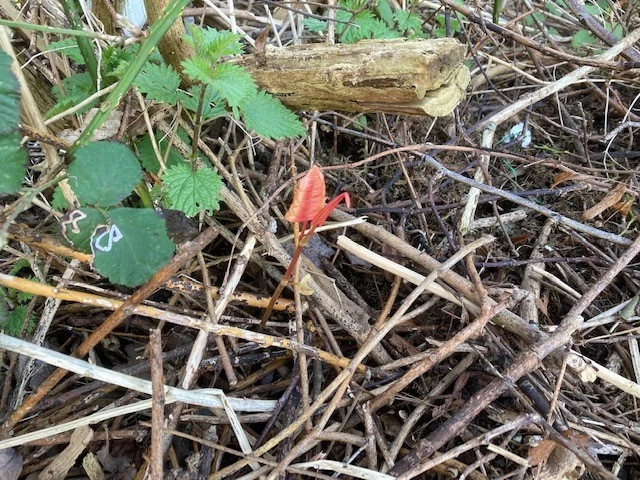
New growth manifests as delicate, quickly expanding reddish-purple shoots that resemble asparagus spears.
The hollow, bamboo-like stalks can expand up to 10 cm every day. The stem develops a zigzag pattern as the leaves grow on opposite sides of the stem.
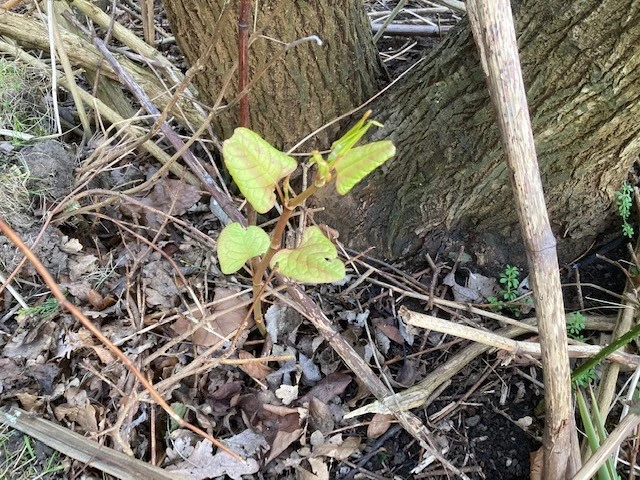
Japanese knotweed canes can reach heights of about 3 to 3.5 metres.
It frequently grows as a semi-dense stand of erect stems with 200mm-long shovel-shaped leaves and thick green foliage.
How To Identify Japanese Knotweed In Summer
The mature Japanese Knotweed stems are fully developed with big, green leaves over the summer. Japanese Knotweed produces elongated clusters of creamy-white blooms.
The Japanese Knotweed plants will start to flower as the summer goes on.
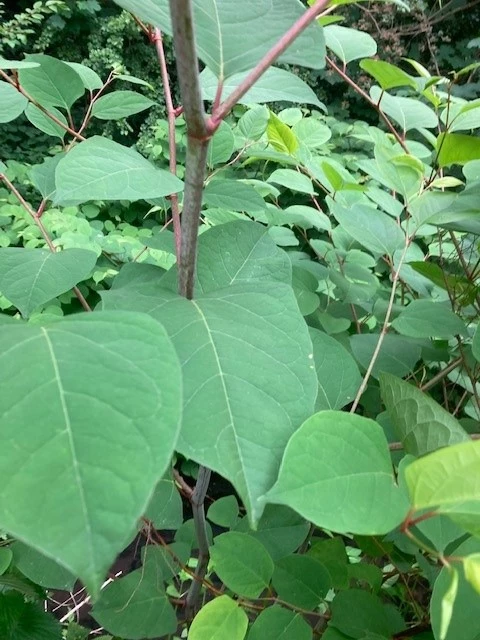
Since there are so many flowering plants and weeds in the early summer, it can be difficult to distinguish a Japanese Knotweed infestation from other invasive species.
However, at Japanese Knotweed, our professionals deal with this plant and other invasive species on a year-round basis, and we can assist you in doing so (and other invasive species)
Japanese knotweed canes can reach heights of about 3 to 3.5 metres.
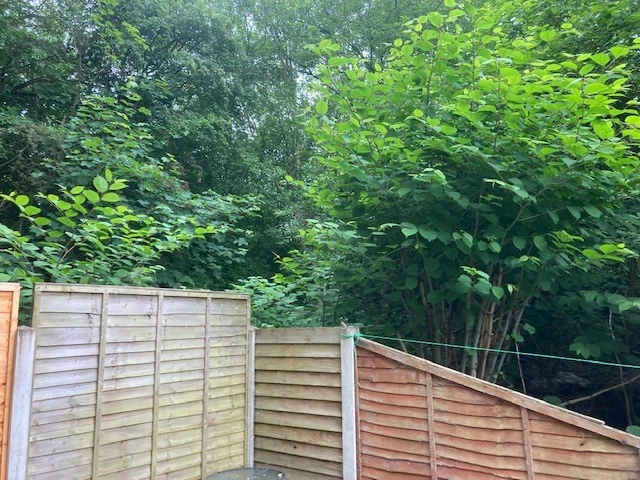
It frequently grows as a semi-dense stand of erect stems with 200mm-long shovel-shaped leaves and beautiful green foliage.
How To Identify Japanese Knotweed In Autumn
In early October, Japanese knotweed blossoms are frequently visible. Some of these will have developed into seeds at the start of autumn (achenes from Russian vine pollen, as there are no male Japanese knotweed plants in the UK).
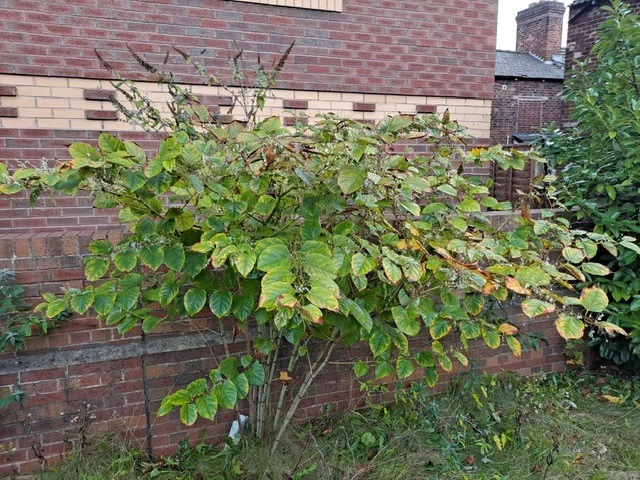
The seeds and creamy white blooms form distinct panicles. By the end of October, the flowers and seeds will have shed.
Around this time, the dark green leaves of the Japanese knotweed begin to turn yellow and eventually brown. However, if there haven't been any frosts, some plants' leaves may still be present in December, especially if they are shielded from the wind.
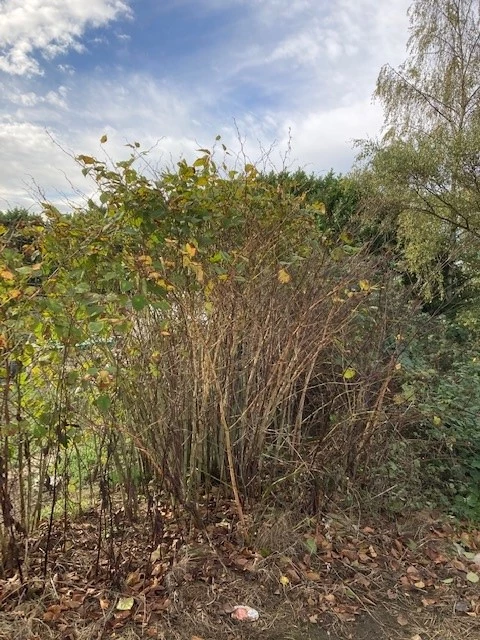
Additionally, the stems begin to wither, turn reddish-brown or straw-coloured, and die.
Japanese Knotweed Features in Autumn
Flowers and tiny (5mm) seed casings fall from stem bracts.
The knotweed leaves turn yellow and start to fall; the yellowing may begin at the leaf margins and progress gradually.
Reddening and leaf-shedding stems
How To Identify Japanese Knotweed In Winter
Identifying Japanese Knotweed in the winter can be a little challenging. Knotweed's leaves and flowers are some of the most obvious signs that it is a weed.
This being said, Knotweed can still be identified throughout winter if you know what to look for.
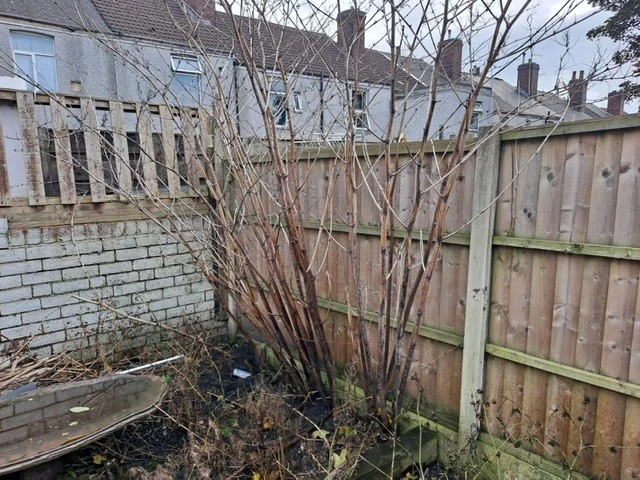
All of the leaves on the Japanese Knotweed will be gone by winter, but the long clustered branches will still be there. These canes will eventually die, become brittle, and turn brown. These stems can remain upright all winter if not disturbed.
However, the weed's 'crown' and rhizome remain dormant during the winter while they wait for spring to return so they may restart the cycle.
Wintertime Japanese knotweed detection can offer the ideal opportunity to address the issue head-on.
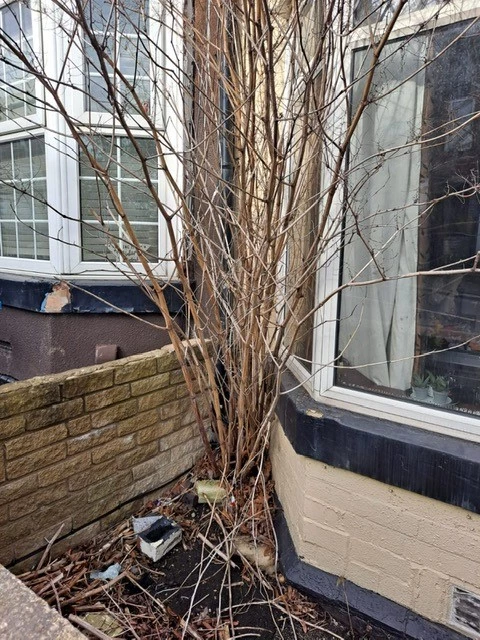
Removing the contaminated soil and restoring it when the weed is dormant and there is less activity in the garden or green spaces, your troubles will be forgotten when spring arrives.
How To Identify Japanese Knotweed Roots
You might come across the roots of Japanese knotweed when digging, working in your garden, or working on a commercial site.
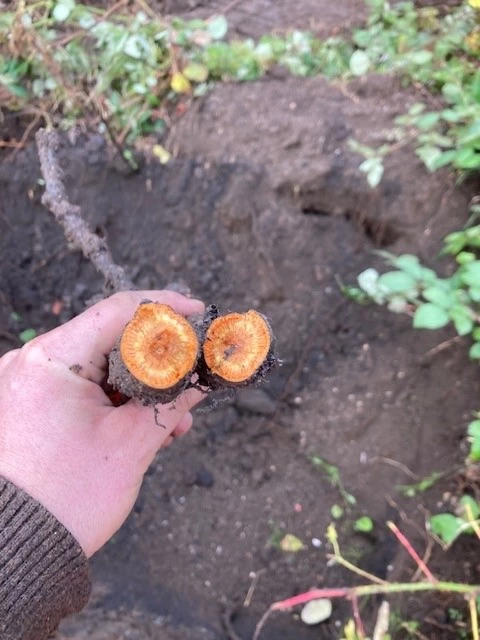
Rhizomes, the name for these roots, function like underground stems.
Fresh roots will snap off readily, much like a carrot. The interior is orange or yellow, while the exterior is dark brown.
The root system can spread seven metres horizontally from the plant's visible portion and grow as deep as two metres. The knotweed's ability to spread and its resilience is attributed to these roots.
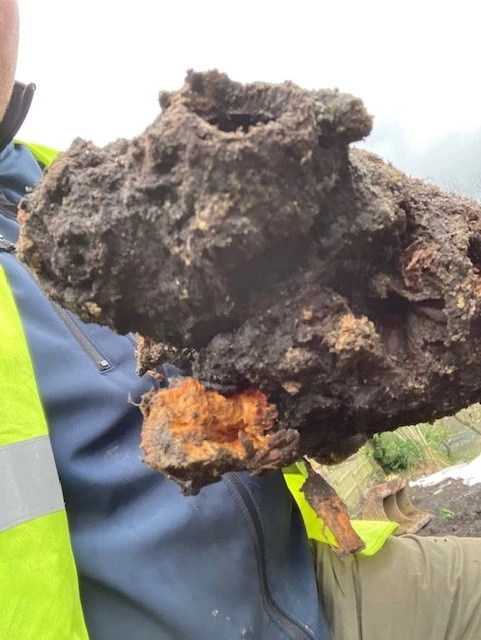
A single healthy root can give rise to an entirely new plant, which would bring back the infection.
Identifying Japanese Knotweed Shoots
Japanese knotweed shoots have a cane-like appearance and develop in distinct segments with a hollow centre.
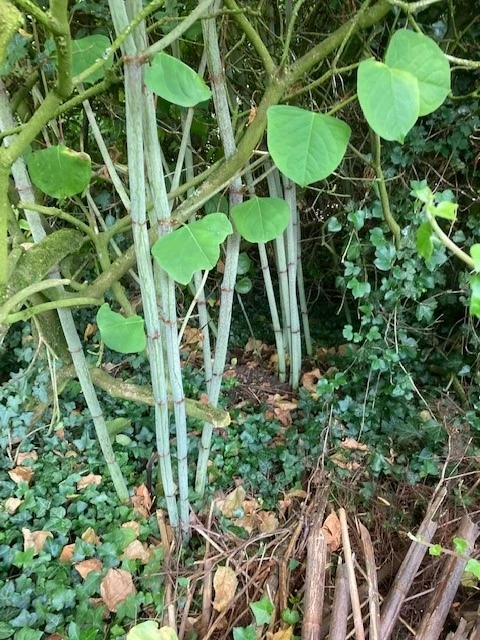
The following characteristics of Japanese Knotweed shoots should be noted:
They can reach heights of up to 2-3 metres, and the stems are hollow.
Red in the springtime.
Green throughout the summer.
Similar to bamboo shoots in appearance.
Identifying Japanese Knotweed Stems
The knotweed stems resemble bamboo and have noticeable nodes/rings and purple flecks.
Alternating leaves emerge from the stem nodes, forming a "zig-zag" pattern at the top.
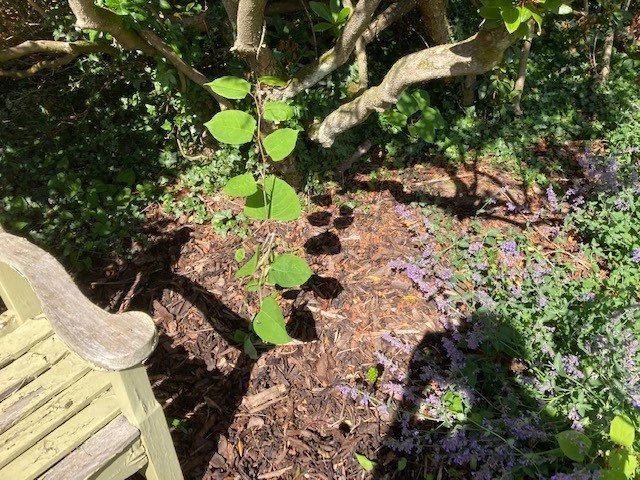
Stems significantly thinner and shorter than mature stems result from immature development from small crowns, fragmented or disturbed rhizomes, and locations where mowing or other techniques to lower plant vigour have been used.
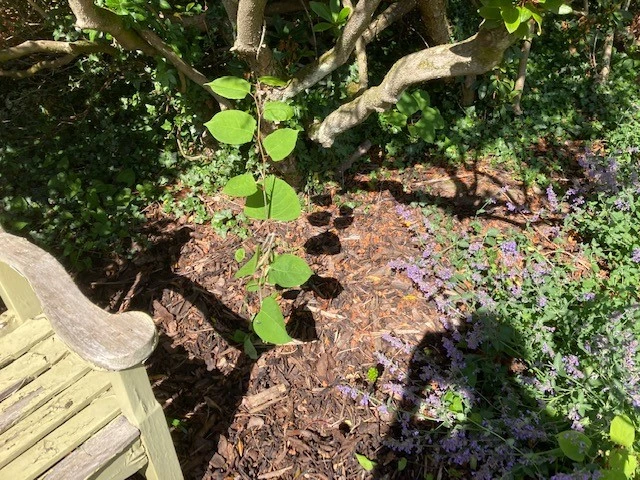
Mature growth produces 2m to 3m tall thickets are produced. Adult stems are hollow and can be easily snapped.
Do You Think You Can Identify Japanese Knotweed?
If you think you have identified Japanese Knotweed, you could take a photo and send it to us, and we can arrange to come and check this for you.
Our professionals are happy to answer any queries you have, fill out our enquiry form with all of your details and concerns, and we'll respond as soon as possible.
Knotweed Solutions Near Me
At Japanese Knotweed Specialist, we offer expert Japanese knotweed identification and removal services throughout the UK.
Whether you're looking to confirm the presence of Japanese knotweed or need help removing it, our experienced team is ready to assist, no matter where you're located.
We provide the following services:
Japanese Knotweed Removal: We use proven, effective methods to safely remove Japanese knotweed and prevent its regrowth, protecting your property from further damage.
Tailored Solutions for Your Property: We create customised plans based on your specific situation, ensuring the most effective removal process for your home or business.
Nationwide Coverage: Our services are available across the entire UK, ensuring you have access to expert help wherever you are located.
Trust us at Japanese Knotweed Specialist to handle all your Japanese knotweed concerns.
If you've got any concerns about plant infestation near your property, please do not hesitate to contact us.
Types of Knotweed
There are different types of Knotweed plants. The four main types of closely related species include:
Giant Knotweed (Giant knotweed is also known as Reynoutria sachalinensis, Fallopia sachalinensis).
Himalayan Knotweed (Persicaria Wallichii).
Dwarf Japanese Knotweed (Dwarf knotweed is also known as Reynoutria Japonica var).
Compacta (Fallopia Japonica var).
Giant knotweed is a hybrid plant similar to Japanese Knotweed but much bigger.
Dwarf knotweed is small and will only reach 1-1.8m in height.
Many hybrid plants usually have crinkled edges and a leathery texture, compared to the Japanese Knotweed leaf, which has a zig-zag pattern.
What can be Mistaken for Japanese Knotweed?
There is a variety of plants mistaken for Japanese Knotweed. Below is some which are commonly mistaken for this weed:
Russian Vine
Himalayan Balsam
Himalayan Honeysuckle
Woody Shrubs & Trees
Houttuynia
Ornamental Bistorts
Lesser Knotweed (Persicaria campanulata)
Broadleaved Dock
Bindweed
Bamboo
Horsetail
Buckwheat
Identifying the suspect plant is essential. Postponing treatment can cause further damage to your property, and the presence of knotweed can affect your mortgage and insurance.
This is where our team of specialists can help.
We will examine various factors, including the leaf shape, zigzag growth pattern, height, and flowers.
Russian Vine is a climbing plant and so is Hedge Bindweed, whereas knotweed is not known as a climbing plant.
Contact Our Team
If you would like more information on Japanese knotweed identification in Northfleet DA11 9 please complete our enquiry form or call us today and we will get back to you as soon as possible.
We will be more than happy to answer any questions or queries you may have so please don't hesitate to get in touch now.
We cover Northfleet (Kent)
